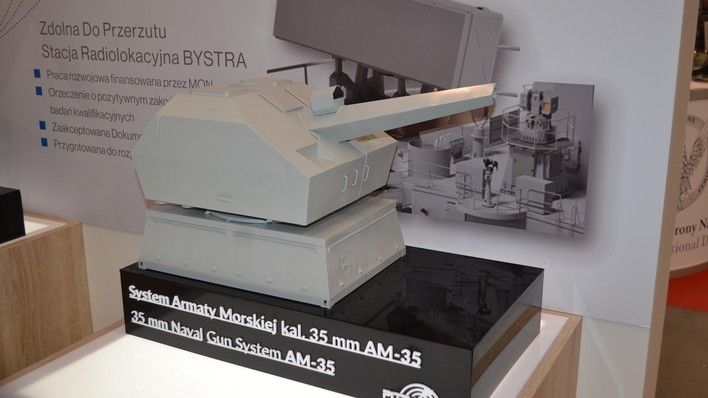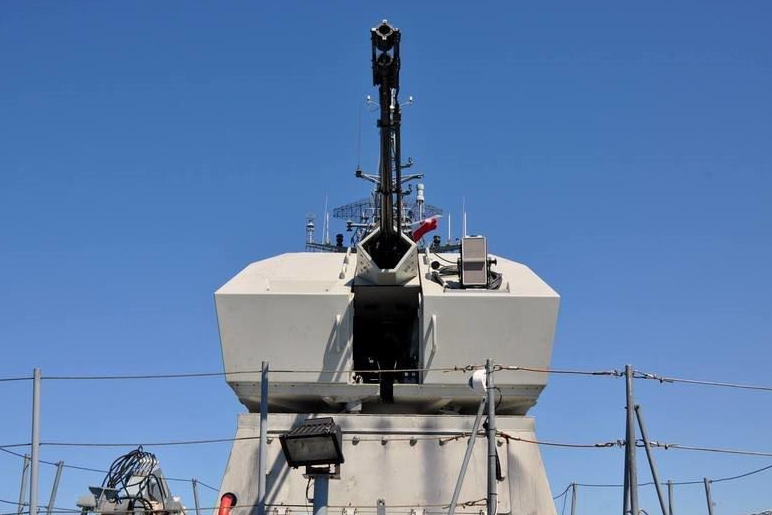Industry
BME 2018: Polish Sea-Based SHORAD with AESA radar

Polish PIT-RADWAR company is presenting its Bystra-M maritime radar concept, during the Balt Military Expo 2018 event. The radar in question is a development of the land-based Bystra solution which is the first Polish AESA radar system. Bystra-M may be used to support the fire control procedures in the anti-aircraft systems, it may also detect maritime targets.
Bystra-M radar is going to be used for simultaneous detection of airborne and maritime targets. It is to be capable to observe objects at distances of up to 60 nautical miles (more than 111 kilometres). Bystra-M is an AESA radar developed by PIT-RADWAR and operated in the C-band.
The system is going to be capable of detecting targets in a 360 degrees sphere, with elevation ranging from -10° to 70°. It is also going to make the user able to detect low-RCS targets, including drones or anti-ship missiles. Bystra-M is to be fitted with a Mark XIIA IFF system. Naturally, the radar would be tailored to work in maritime setting, with elimination and mitigation of the phenomena related to the leaning ship ensured.
Bystra-M constitutes a derivative of the deployable Bystra radar which is the first Polish AESA radar developed within the scope of an R&D study ordered by the Polish MoD. Bystra radar had already passed the qualification test programme. Recently the MoD told us that contracts concerning the delivery of the said radar is planned to be concluded by the end of this year.

Bystra system, in its conventional variant, is to support the VSHORAD and SHORAD units, within the fire-control domain. These radars, according to the concept presented by the industry last year, could act as a fire control unit of the Narew air defence systems, preceding the Sajna radar that would not be combat ready yet.
Furthermore, the AESA technology allows Bystra to detect mortar rounds, as well as to define their point of impact and the firing location. Bystra-M is another continuation of the works undertaken by PIT-RADWAR.
Alongside the Bystra-M radar, the Polish company is also showcasing a model of the 35 mm AM-35 Tryton gun developed for the Polish warships. ORP “Kormoran” mine countermeasures vessel is the first of the Polish warships to receive this system. The prototype of that gun has been fitted onto the ORP “Kaszub”.
PIT-RADWAR is also offering a land-based 35 mm anti aircraft system, with the coastal Navy units being one of the potential future users considered – currently these elements are operating the S-60MB cannons. Both weapons would be tailored to use programmable rounds and they comply with the NATO standards.
Both the 35 mm cannons, as well as Bystra radars that may support target detection and tracking for these anti-aircraft systems, would be delivered in land and naval variants. Bystra and future Bystra-M radars will also offer an option of being coupled with missile systems. All of the above translates into creation of further elements of the Polish “shield” that may act as an integrated air defence system.

